
How Will Trump’s Tariffs Affect Inflation and Gold and Silver Prices
The return of tariff policies under Donald Trump has sparked discussions about their potential economic impact. Tariffs, especially those on major trade partners, can increase the cost of imported goods, leading to higher consumer prices. Inflation might rise, which could have significant consequences for both the economy and commodity markets.
Increased inflation tends to influence gold and silver prices, as investors often seek these precious metals to hedge against currency devaluation and economic uncertainty. The anticipation of rising inflation due to tariffs could prompt a surge in demand for gold and silver, affecting market trends significantly. Traders will watch closely to see how these tariffs might alter the balance between inflation rates and metal prices.
The ripple effect of tariffs isn’t limited to just imported goods and inflation. Trade tensions can lead to broader economic challenges, affecting everything from the Federal Reserve’s monetary policies to global trade relations. Understanding how these factors interact will better equip investors and policymakers to respond effectively.
Key Takeaways
- Tariffs may increase inflation, impacting the economy.
- Gold and silver prices could rise as investors seek hedges.
- Tariffs may affect trade and monetary policies broadly.
Download our Free Gold Report PDF.
Impact of Tariffs on Inflation
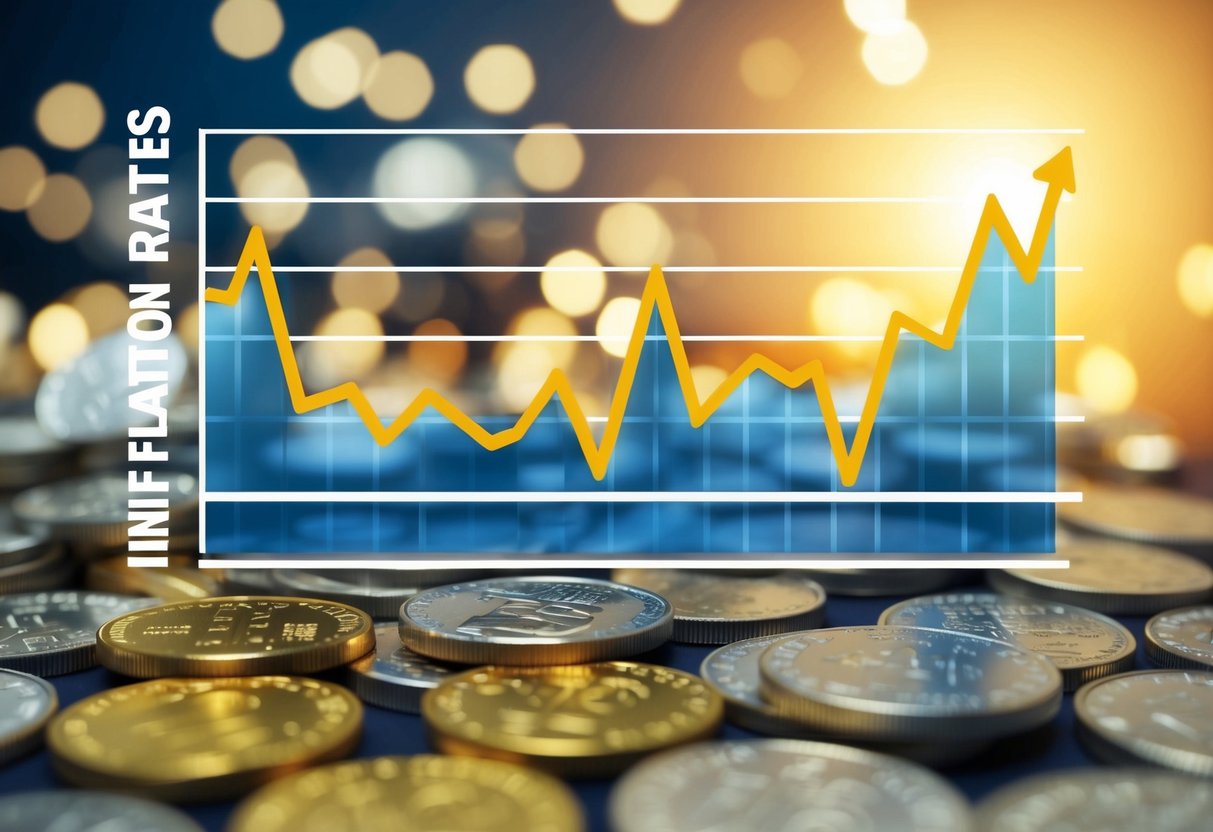
Tariffs often lead to higher costs for imported goods. This happens because additional fees are added to items brought in from other countries like China, Mexico, and Canada.
Rising import costs generally result in increased consumer prices. When goods cost more at the point of purchase, it often leads to inflationary pressures on the economy.
Domestic manufacturers may face less competition from foreign products due to tariffs. While this might help some local industries, it may not be enough to offset the rising costs consumers face for other goods.
The effect of tariffs on inflation can be seen over time. Experts anticipate that Trump’s tariffs will create a one-time jump in prices, causing inflation to rise temporarily as the market adjusts.
When tariffs are applied broadly, the impact on inflation can become significant. This is due to a large number of products experiencing cost increases, which can contribute heavily to overall price levels.
Import duties can thus have a complex influence on inflation, affecting both consumer prices and domestic production. The anticipation of these tariffs has already created uncertainty around the economic outlook, which can also impact inflationary trends.
Inflation and Its Effect on Gold and Silver Prices
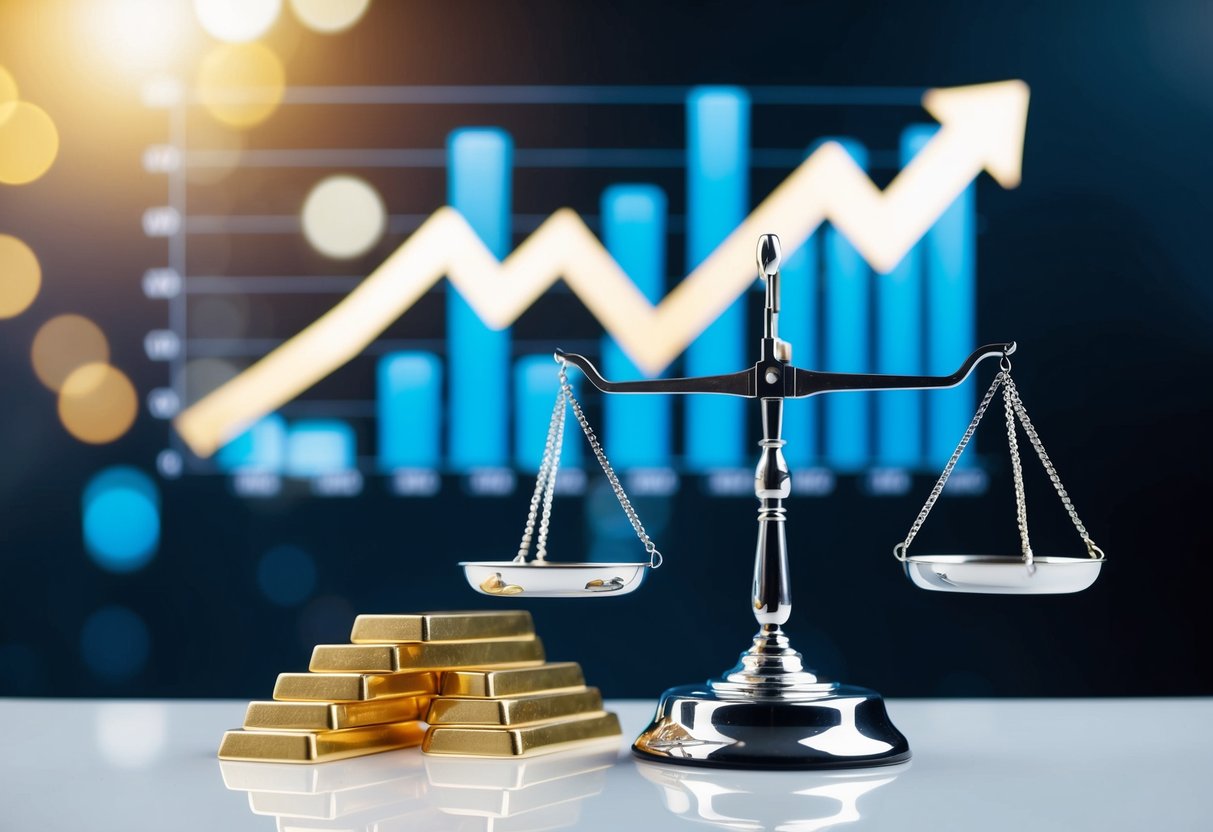
Inflation affects the economy in many ways, including the way it influences gold and silver prices. When inflation rises, the value of currency usually decreases, leading investors to seek safe havens like precious metals. This demand can push gold and silver prices higher.
In a high inflation environment, people often lose confidence in cash investments. As a result, they turn to tangible assets such as gold and silver, which are seen to hold value over time. This change in investment behavior can boost demand for these metals.
The fluctuation of the market plays a significant role in precious metal pricing. During periods of low inflation, gold and silver might not attract as much interest. However, high inflation tends to trigger a shift in investment strategies.
Here’s a simple breakdown of how inflation impacts precious metals:
- Increased Demand: As currency value drops, people seek to preserve their wealth.
- Rising Prices: Higher demand can lead to higher gold and silver prices.
Gold prices react more to economic instability and inflation. Silver, though similar, is also influenced by industrial demand. In uncertain times, both metals gain attention as investment tools. Understanding the relationship between inflation and precious metals helps investors make informed decisions.
U.S. Tariff Policy History and Trade Wars

The implementation of tariffs by Donald Trump marked a significant shift in U.S. trade policy, impacting global trade relations. These tariffs led to tensions with major trading partners, prompting retaliatory measures that influenced markets worldwide.
The Background of Trump’s Tariff Implementation
Donald Trump’s administration introduced tariffs with the aim of protecting American industries. The focus was on steel and aluminum, with tariffs of 25% and 10% respectively. These moves were part of a strategy to reduce the U.S. trade deficit and encourage domestic production.
China faced the brunt of these actions, resulting in a shift in supply chains. The tariffs were seen as an effort to challenge what was perceived as unfair trade practices by China. Tensions were not limited to China; similar measures were taken against Mexico and Canada, affecting sectors such as automotive and agriculture.
Retaliatory Tariffs and International Trade Tensions
In response to U.S. tariffs, several nations imposed retaliatory tariffs, escalating trade tensions. China, affected significantly by the tariffs, targeted American agriculture, placing heavy duties on products like soybeans and pork. This created a challenging environment for U.S. farmers reliant on exports.
Canada and Mexico also applied countermeasures. These actions contributed to an intricate web of trade barriers that complicated global trade dynamics. The international trade community faced increased uncertainty, with fluctuations in currency values and shifts in global supply chains. The trade war thus fostered a climate of economic unpredictability, influencing decisions made by businesses and governments globally.
Economic Outcomes of Tariff Policies
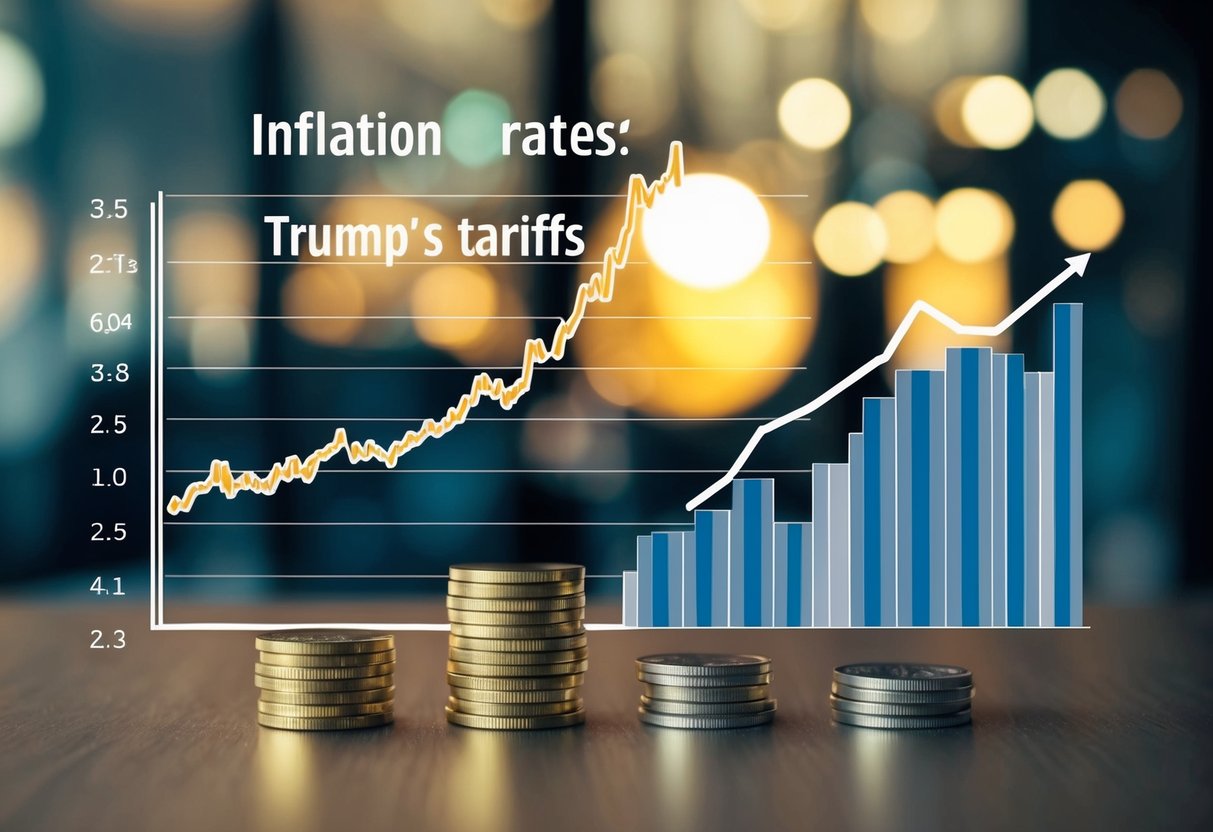
Tariffs can reshape economic landscapes. Their effects on GDP, trade deficits, and domestic industries are critical to understand. Each area responds differently to changes in policy and can have far-reaching impacts on the U.S. economy.
Effects on GDP and U.S. Economy
Tariffs are designed to protect domestic industries by making imported goods more expensive. This can have mixed impacts on GDP. While they may encourage local production, they can also lead to increased prices for consumers and businesses that rely on imports. This price increase might suppress consumer spending and investment, potentially hindering GDP growth. Additionally, retaliatory tariffs from other countries can limit American exports, further challenging economic expansion.
Moreover, a focus on tariffs can distract from more effective economic policies that could directly stimulate growth. The potential for a temporary boost to certain industries doesn’t always translate to long-term economic benefits. Understanding these dynamics helps in assessing broader economic impacts.
Trade Deficit Considerations
Tariffs influence the trade deficit by altering the balance between imports and exports. In theory, by making imported goods more costly, domestic alternatives become more competitive, potentially lowering the trade deficit. However, this is not always the case.
Other countries may respond with their own tariffs, reducing U.S. export competitiveness and possibly widening the trade deficit. Additionally, if the domestic industry cannot meet demand, the higher cost of imports could persist, negating any potential deficit reduction. Navigating these complex interactions is vital for understanding how tariffs might affect the overall trade balance.
Domestic Production and Manufacturing
A primary goal of tariffs is to boost domestic production and manufacturing. By making foreign goods pricier, these policies aim to drive demand towards homegrown products. This can lead to growth in domestic factories and increased employment. However, if industries rely on imported materials or components, higher prices can increase production costs, affecting their competitiveness.
In some sectors, manufacturers may struggle to replace imported goods with local options, potentially resulting in higher consumer prices without significant production gains. Careful consideration is essential to balance protecting domestic manufacturing with maintaining affordable prices for consumers.
Analysis of Tariffs on Specific Industries
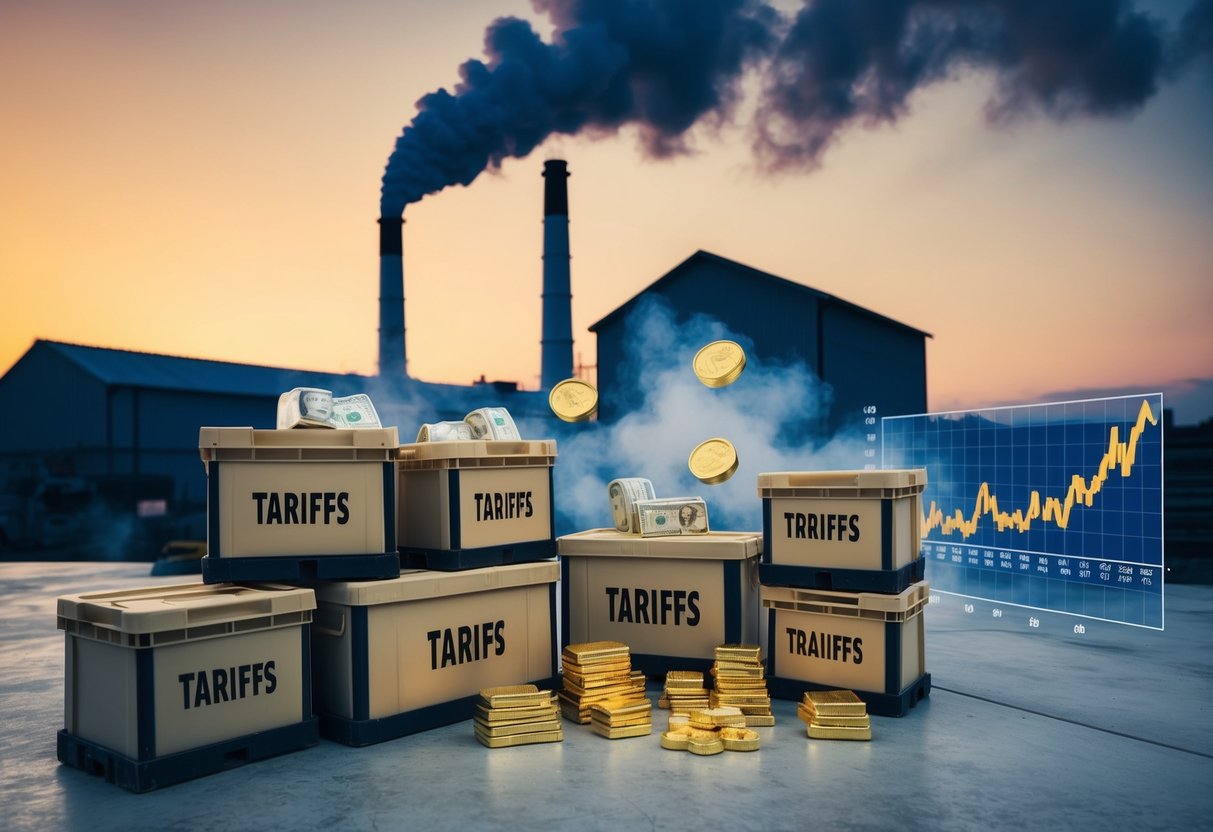
Tariffs on specific industries can have a wide range of effects. Industries like technology and those with significant intellectual property concerns might experience unique impacts, particularly when imports from China are involved.
Protected Industries and Intellectual Property
Tariffs are often used to protect industries important to national interests, such as steel and aluminum. These industries can benefit as tariffs make imported goods more expensive, potentially boosting domestic production.
Intellectual property concerns lead to tariffs targeting sectors where piracy and counterfeiting are prevalent. For example, sectors producing complex machinery and pharmaceuticals might see increased tariffs to discourage the import of counterfeit or unauthorized products. This aligns with efforts to protect patents and trademarks, encouraging innovation and investment in domestic industries.
Such tariffs can lead to increased prices for imported goods but aim to bolster the economy by supporting local jobs and technology advancements.
The Technology Sector and Chinese Imports
The technology sector is heavily impacted by tariffs on Chinese imports. Many tech products and components are manufactured in China, making tariffs a significant factor in pricing for consumer electronics, laptops, and smartphones.
When tariffs increase, companies might pass these costs to consumers, leading to higher retail prices. Alternatively, firms may seek alternative manufacturing locations to bypass these tariffs. The effects can ripple through supply chains, affecting both large corporations and small businesses that rely on affordable tech production.
Tariffs could also encourage domestic investment in technology manufacturing, although shifting production can be complex and costly. Adjusting to these tariffs requires strategic economic planning, influencing trade relations and international economics significantly.
The Federal Reserve’s Response to Tariffs
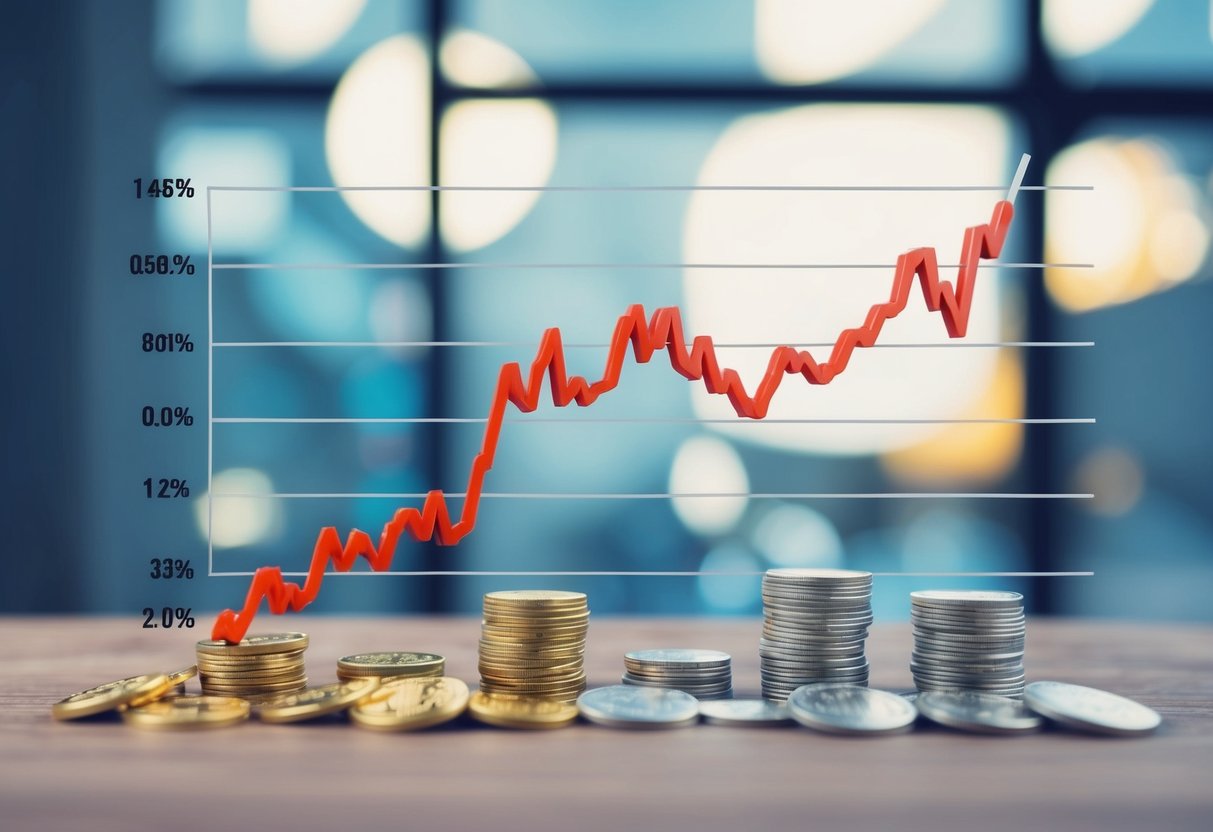
The Federal Reserve closely monitors economic policies that could influence inflationary pressure. When tariffs are introduced, there is often concern about rising prices, as seen with Trump’s tariff plans. These tariffs can increase the cost of imported goods, potentially leading to short-term inflation.
Interest rates are a key tool for the Federal Reserve to manage inflation. By adjusting rates, the Fed can influence economic activity and control inflation. In the face of tariffs, interest rate decisions become more critical. According to Fed Chair Jerome Powell, although tariffs are significant, other factors also play a role in rate decisions.
This careful balance is essential for the economy. If tariffs cause prices to rise too quickly, the Federal Reserve might consider increasing interest rates to curb inflation. Conversely, if inflation remains stable, rate hikes may not be necessary.
The Fed’s approach to interest rates amid tariff-related uncertainty requires a comprehensive view of the economy. They evaluate multiple economic indicators to make informed decisions. By maintaining a balanced response, the Federal Reserve aims to keep inflation in check while supporting economic growth.
Political and Economic Theories Behind Trade Policies

Trade policies often hinge on two competing theories: free trade and protectionism. Additionally, economic decisions like tax cuts play a significant role in shaping national economies. This section explores these concepts and their influence on global trade.
Free Trade Versus Protectionism
Free trade encourages countries to exchange goods without barriers like tariffs or quotas. This principle, supported by many economists, suggests that open markets lead to more efficient resource distribution and economic growth. The Peterson Institute for International Economics has frequently advocated for free trade, highlighting its benefits in terms of increased competition and consumer choice.
Protectionism, by contrast, focuses on restricting imports to protect domestic industries. Proponents argue that this approach helps safeguard jobs and promote national security. Critics, however, point out that protectionism can lead to trade wars and higher prices for consumers. The debates between free trade and protectionism continue to shape global trade policies.
Tax Cuts and Economic Impact Analysis
Tax cuts are often used as a tool to stimulate economic growth. By reducing taxes, governments aim to increase disposable income for individuals and businesses, leading to higher spending and investment. This can, in turn, spur economic activity and create jobs.
Economists analyze the impact of tax cuts on different sectors. For instance, while they may boost consumer spending, critics argue that they can also lead to higher deficits. The effects of tax cuts can vary based on their implementation and the broader economic context, making careful analysis critical to understanding their true impact.
These policies and theories remain central to discussions around trade and economic strategies worldwide.
Social and Geopolitical Factors Influencing Trade
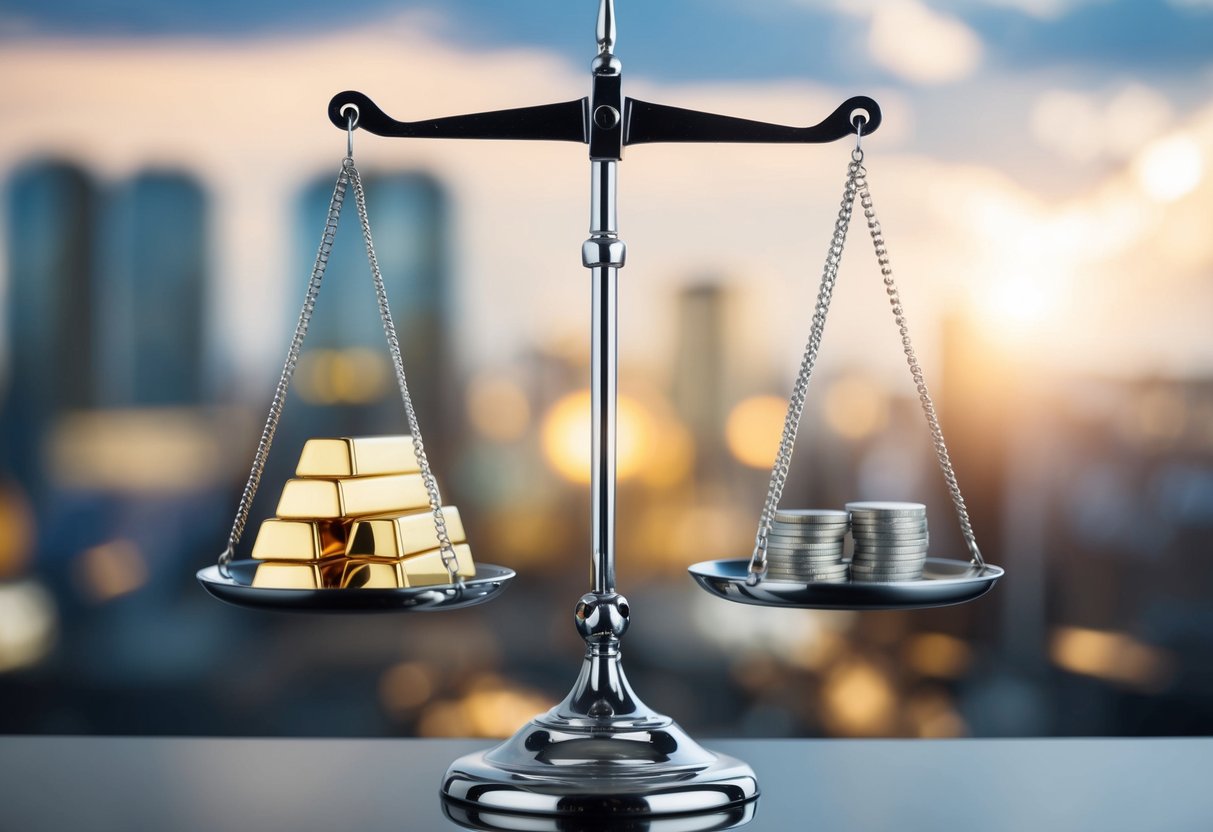
Social and geopolitical factors significantly impact trade dynamics. Election Day decisions can cause shifts in market expectations, affecting trade policies. Additionally, international conflicts often disrupt supply chains and alter trade relationships.
Election Day Decisions and Market Reactions
Election Day outcomes can have major implications for trade policies. Political shifts can lead to changes in leadership priorities and regulatory approaches. For instance, a new administration might pursue protectionist policies, introducing tariffs that reshape global markets. These policies can lead to uncertainty among investors, affecting commodity prices, including gold and silver.
Campaign promises and political agendas influence market expectations ahead of elections. If a candidate emphasizes tariffs and domestic production, markets might anticipate increased costs for imported goods. This potential rise in costs can lead to inflationary pressures, affecting purchasing power and investment strategies.
When election results favor candidates with strong stances on trade, there can be significant fluctuations in currency and stock markets. Investors may react by seeking safe-haven assets like gold and silver, impacting their prices. The anticipation of enforcement of tariffs or the withdrawal from trade agreements adds a layer of complexity to market predictions.
International Conflicts Impacting Trade
Geopolitical conflicts like the tensions between Ukraine and Russia profoundly impact trade flows. Such conflicts can disrupt crucial supply chains, leading to shortages of key resources. Countries directly involved or allied with belligerent nations may face trade embargoes or sanctions, complicating trade relationships further.
Trade partners might alter agreements due to safety and reliability concerns. For instance, prolonged conflict in Europe can lead to increased security costs and changes in trade routes, affecting the availability of commodities. Disruptions in energy supply, such as natural gas from Russia to Europe, can drive up prices globally, influencing economic conditions elsewhere.
Domestically, international drug crises, including the trafficking of substances like fentanyl, highlight how non-economic geopolitical factors can impact international cooperation. Efforts to curb such trade can require reallocating resources and attention, affecting both domestic and international trade priorities.
Comparative Analysis of Precious Metals Markets
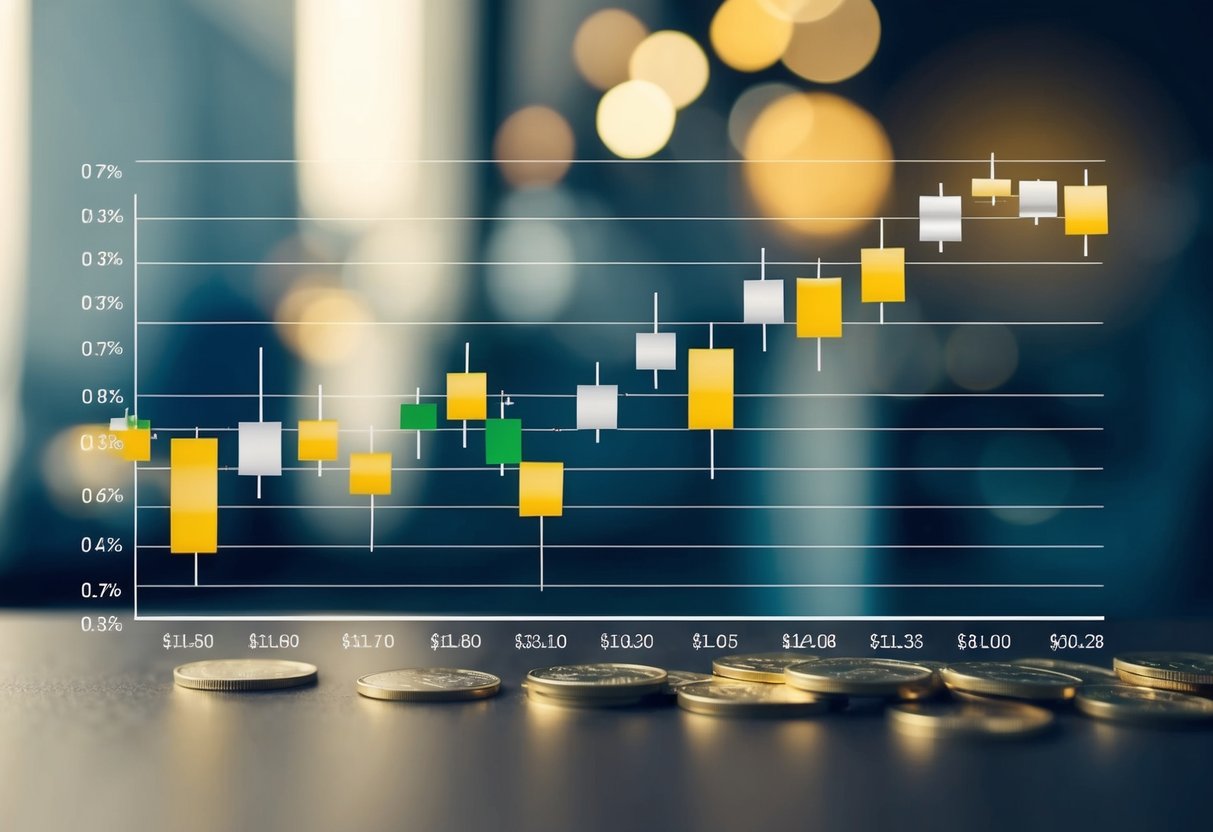
Precious metals like gold and silver have different roles in the market. Gold is often seen as a safe haven during economic instability, making its price sensitive to inflation and interest rate changes. A rise in inflation often leads to an increase in gold prices as investors seek stability.
Silver, however, has dual uses—both industrial and investment. Changes in industrial demand, such as those affected by tariffs, can significantly influence its price. For instance, tariffs on metals might disrupt silver supply chains, impacting prices differently compared to gold.
The gold-to-silver ratio is a common metric used to compare these metals. This ratio indicates how many ounces of silver it takes to purchase one ounce of gold. When the ratio is high, silver is considered undervalued compared to gold. Changes in this ratio can signal shifts in market sentiment and help guide investment strategies.
Market Sentiments: Economic policies like tariffs can shift market sentiments. Gold prices may rise with increased trade tensions, as seen with historical trends. Silver prices react to both market demand and industrial needs, making them more volatile.
Key Influences on Price Changes:
- Gold: Inflation, geopolitical events, currency strength
- Silver: Industrial demand, economic growth, trade policies
Understanding these market dynamics helps investors make informed decisions about their metal investments amid changing economic policies.
Consequences for U.S. Businesses and Consumers
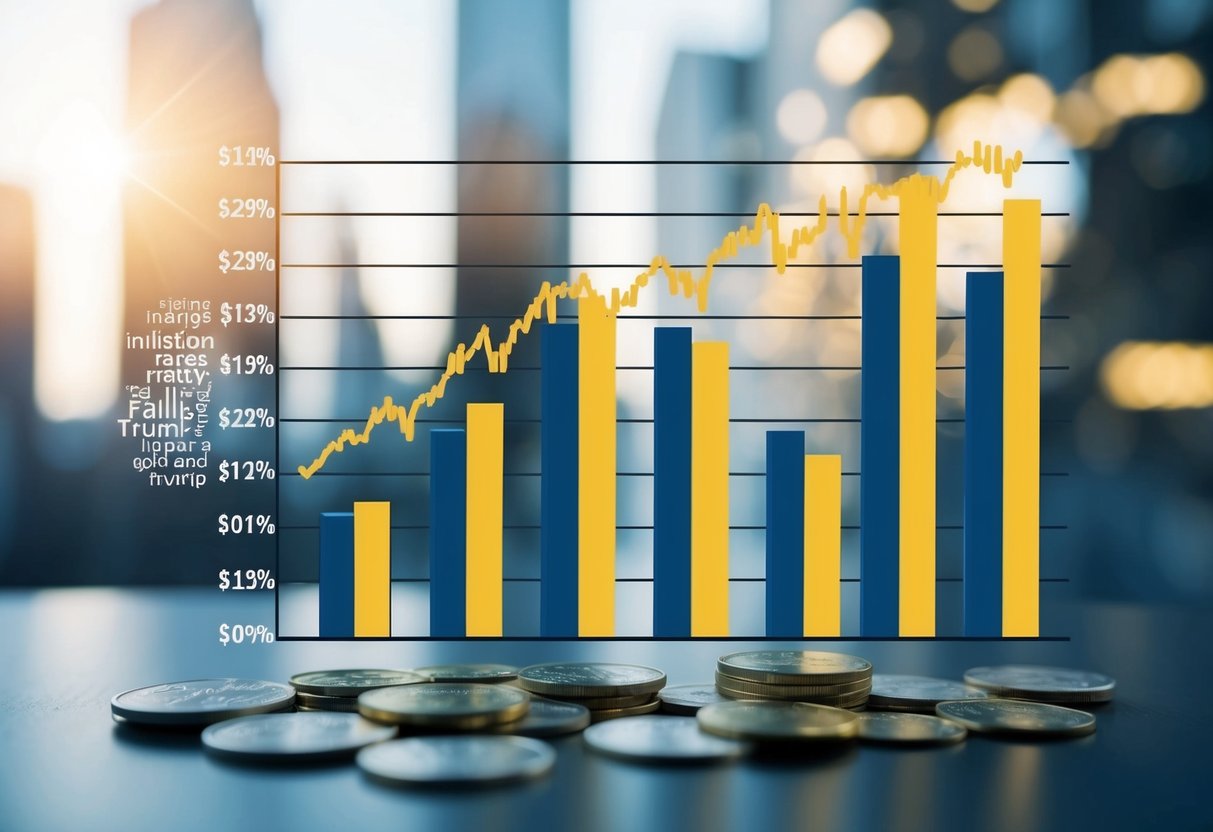
U.S. businesses and consumers are directly affected by tariffs, altering the landscape of imports and exports. These changes impact prices and spending habits, increasing economic uncertainty. Understanding how tariffs connect to potential recession risks and credit card defaults is crucial. Here’s a closer look at how these elements interrelate.
The Ripple Effect on U.S. Imports and Exports
Increased tariffs can significantly impact U.S. imports, leading to higher costs for goods. Companies importing raw materials or finished products may face escalated expenses, affecting their profit margins. These costs could be passed on to consumers, raising consumer prices.
Exports are also affected. Tariff retaliation from other countries can hinder U.S. exports, limiting market access for American products. This could result in reduced sales for exporters. Changes in trade policies create uncertainties for businesses, complicating long-term planning. The complex global trade network means that shifts in one area can have widespread consequences, influencing everything from product availability to pricing strategies.
Consumer Spending and Credit Card Defaults
Higher consumer prices, due to tariffs, can directly impact spending habits. When everyday items become more expensive, consumers may reduce their spending. This decline in consumer spending can slow economic growth.
With increased price pressures, some consumers may rely more heavily on credit cards to maintain their lifestyle. Over time, this could lead to rising credit card defaults. As default rates climb, financial institutions might tighten credit availability, affecting overall economic activity. This cycle of reduced spending and increased credit dependency can pose challenges for both consumers and businesses.
Predicting Recession Risks in Light of Tariffs
Tariffs could contribute to recession risks through various channels. As businesses face higher costs and potential loss of international markets, U.S. economic growth might slow. Reduced consumer spending and higher credit card default rates can exacerbate these pressures.
Economic uncertainty grows, affecting both investor confidence and business investments. If trade tensions persist, they could weaken economic resilience, making the U.S. more susceptible to a downturn. However, predicting a recession is complex, and many factors need consideration. Tariffs are just one part of a larger economic landscape with interconnected elements that can shape future growth or decline.
Long-Term Implications of Tariff Policies on the Economy
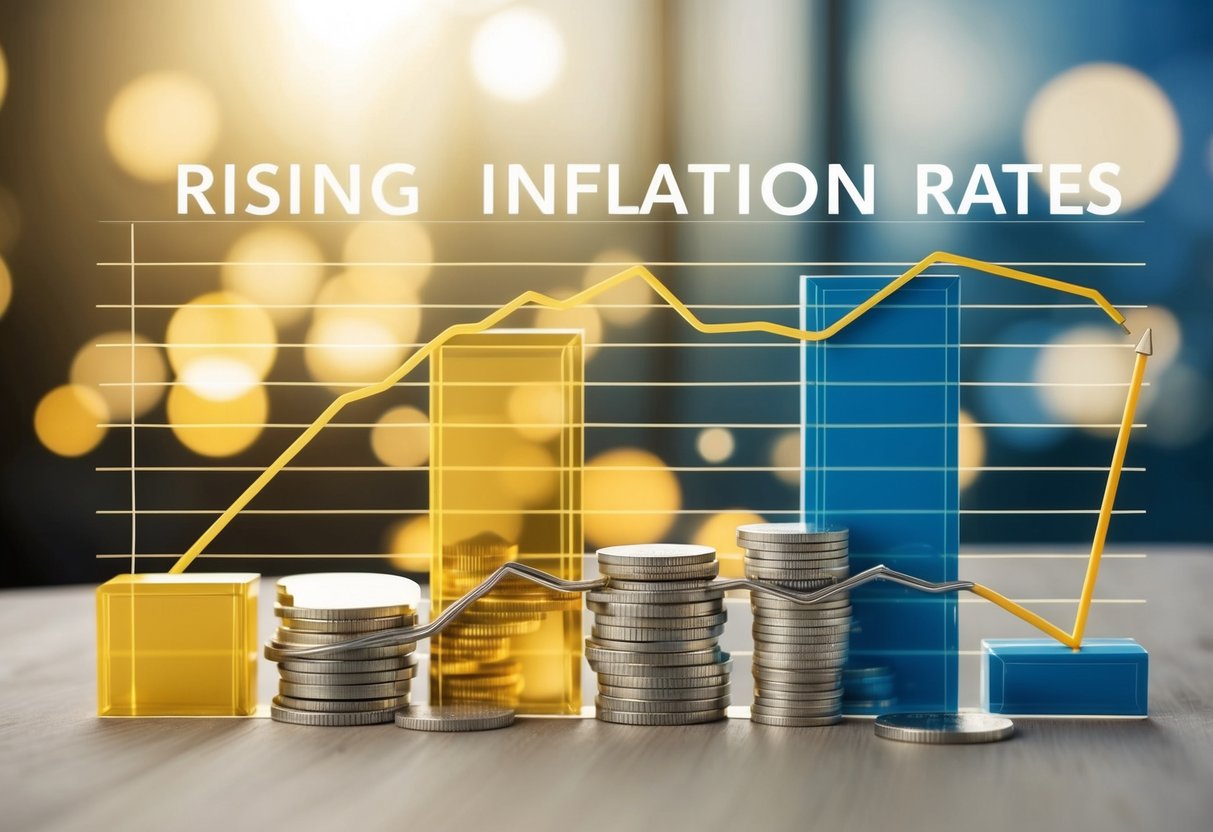
Tariff policies, like those proposed by Trump, have wide-ranging effects on the economy. Imposing a 10% tariff can lead to increased costs for businesses and consumers, causing price increases on imports. Higher costs may result in inflation, as businesses pass these extra charges on to consumers, impacting their purchasing power.
Tariffs may also affect trade agreements such as the North American Free Trade Agreement (NAFTA). Changes in tariff levels could alter trade dynamics among partner countries, affecting the flow of goods and economic relationships. This could result in uncertainty and potential disruptions for industries reliant on international trade.
The Tax Foundation has discussed how U.S. tariffs create economic burdens. Tariffs can reduce the availability of goods and services and constrain business operations, affecting productivity and growth. In the long term, this could lead to reduced economic efficiency and slower overall growth.
When tariffs increase, U.S. industries might attempt to adapt by shifting production domestically. While this may help some sectors, it can be a complex process that takes time and resources. This shift might not offset the potential negative effects on the overall economic environment.
It’s crucial for policymakers to consider the long-term effects of tariffs. Economic policies that focus heavily on trade barriers might lead to strained international relationships and potentially retaliatory measures from trading partners, complicating international diplomacy and economic stability.
Frequently Asked Questions

Import tariffs often lead to increased inflation, which can impact the prices of commodities like gold and silver. Understanding how tariffs and inflation interact is key for investors looking to navigate changes in these markets.
What is the relationship between import tariffs and inflation?
Import tariffs typically raise the cost of imported goods. When businesses pay more for imports, they often pass these costs onto consumers, leading to a rise in overall price levels, or inflation. This can make goods more expensive over time, impacting the economy on a broader scale.
How do changes in inflation rates impact the value of gold and silver?
Gold and silver often act as hedges against inflation. When inflation rises, the value of currencies may decline, prompting investors to turn to precious metals that typically hold their value. This increased demand can drive up the prices of gold and silver as investors seek stability.
What historical precedents illustrate the effects of tariffs on commodity prices?
Historical cases have shown that tariffs can lead to spikes in commodity prices. For example, during trade wars, imposed tariffs can disrupt supply chains and cause certain commodity prices to rise. These disruptions, often temporary, can nonetheless have lasting impacts on markets like those for precious metals.
Can increased tariffs lead to higher prices of consumer goods and how does that affect the gold and silver market?
Yes, increased tariffs can make consumer goods more expensive, contributing to inflation. In times of inflation, gold and silver often see increased interest from investors as safe haven assets. Hence, the prices of these metals might go up as people look for ways to protect their purchasing power.
How might tariff implementation against certain countries affect global metal prices?
If tariffs target countries that are major producers of metals, supply disruptions can occur, affecting global prices. Trade policies that hinder metal exports or imports from key regions can cause fluctuations in availability and price, prompting shifts in investment strategies as countries adjust to new market conditions.
What strategies can investors adopt to mitigate risks associated with inflation and tariff changes when investing in precious metals?
Investors might consider diversifying their portfolios to include a mix of various assets beyond just precious metals. Staying informed about economic policies and global trade dynamics can also help in making more strategic decisions. Using futures contracts and metal ETFs can provide flexibility and protection against market volatility.


